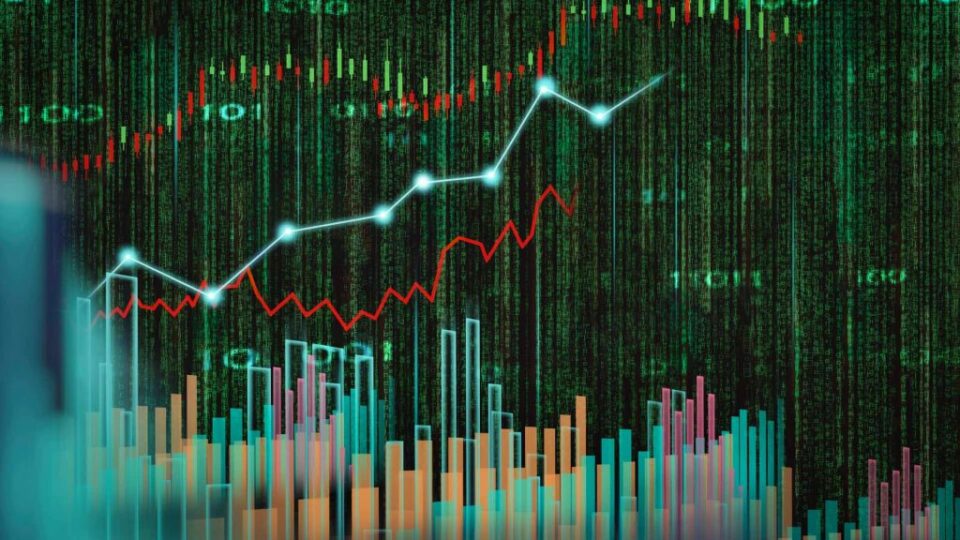A stock market correction, a bond yield spike, a dash for gold – this week had it all. Will this be the exception or the rule for 2022?
Key Takeaways:
- All three primary stock market indexes are flirting with bear market territory as equities got clubbed again this week.
- Gold is trading in the lower end of its upward channel after rising and dropping back 3%.
- Powell’s hawkish pivot isn’t near as hawkish as it seems. Read further to find out why.
Making History
This week, the Dow Jones Industrial Average made history when it dropped 1,000 points, reversed, and closed higher on the day. Apparently, investors still enough money on the sidelines to jack up the markets, but it feels more like dying breaths than bullish momentum.
The S&P 500 is down 10% from its high. The Dow is down 8%. The technology-heavy NASDAQ composite index is down 17%.
Gold held up amazingly well to the rout on equities. Gold-backed ETFs saw their biggest inflows since March of 2020, which means a huge amount of money is moving over to the yellow metal.
However, the hawkish Fed meeting still managed to knock gold down about 3%. The price is sitting in its comfort zone just below $1,800.
A rising U.S. Dollar added to the pressure on gold. The Dollar currency index was up 2.7% this week.
Recap of the Fed Announcement
On Wednesday, every corner of the financial system tuned in for Jerome Powell’s speech following the first FOMC meeting of the year. Powell continued his hawkish tilt, but also withheld as much information as possible to prevent exacerbating the panic that ravaged the markets this week. The Fed will start increasing rates by mid-March. The committee will also end all asset purchases before the Fed Funds rate starts climbing.
Powell dodged reporters’ questions like any good politician should – lots of “we haven’t made any decisions yet” and “we will respond appropriately as certain situations arise.” Overall, the Fed Chair did an excellent job of making our monetary predicament somewhat palatable for market participants. Powell did acknowledge, however, that “we’re going to have to navigate crosscurrents and actually two-sided risks now.”
The “crosscurrents” are the dual risks of accelerating inflation or a recession. The latter is a cure for the former, but both are an economic nightmare. The Fed must carefully move quickly to control inflation and tighten the economy without squeezing it to death.
Is the Fed Really Hawkish?
The word “hawkish” has been thrown around a lot regarding Powell’s recent policy pivot. But is the new Fed policy really hawkish? Compared to the last two years, yes. But looking at all of American history, not even close.
Stephen Roach, Yale University lecturer and former chairman of Morgan Stanley Asia, makes the case beautifully in his recent article The Fed Is Playing with Fire.
As we know, CPI just reached a 40-year high of 7%.
The Fed Funds Rate still sits at 0%.
Usually, you would expect the Fed’s benchmark interest rate to follow inflation. If we lay those two charts over each other, we see how the Fed has hiked rates to combat inflation over the last 50 years.
Notice anything different today? If we subtract the inflation rate from the nominal interest rate, we get a real Fed Funds Rate of -7%. This is an all-time low.
According to Roach, “Only twice before in modern history, in early 1975 and again in mid-1980, did the Fed allow the real funds rate to plunge to -5%. Those two instances bookended the Great Inflation, when, over a five-year-plus period, the CPI rose at an 8.6% average annual rate.”
Let’s say the Fed really does raise the Fed Funds rate to 1% by the end of the year, and inflation moderates to 4%. That is still a -3% real rate, which is ultra-accommodative by every historical measure.
Ultra-Accommodative Consequences
This kind of monetary policy has severe consequences, especially when allowed to continue for years. The Fed has the market addicted to free money, and now they have printed themselves into corner. The longer interest rates stay negative, the further the economy swings away from reality. The more the bubble expands. The more prices skyrocket.
In situations like these, investors need a hedge. Gold provides an escape from the bubble. Give your Vaulted advisor a call to learn how.
Secure gold savings, without the excessive fees
Your weekly gold market commentary comes from our internal team of researchers and technical experts. Vaulted gives modern investors access to physical gold ownership at the best cost structure in the industry. With personal advising from industry experts and access to premier precious metals strategies, Vaulted is the key to life-long financial prosperity. Start protecting your portfolio today.
As always, thank you so much for reading – and happy investing!
Additional Resources:
A key inflation gauge rose 5.8% in 2021, most in 39 years (AP News)
Apple CEO Tim Cook: ‘Everybody’s seeing inflationary pressure’ (CNBC)
Behind the Stock Market Turmoil: A High-Speed Investor U-Turn (Wall Street Journal)
Fed Fallout Triggers Global Yield Spike as Tighter Policy Looms (Yahoo Finance)
‘No more Mr Nice Guy’: Fed chair signals tougher stance on inflation (Financial Times)











